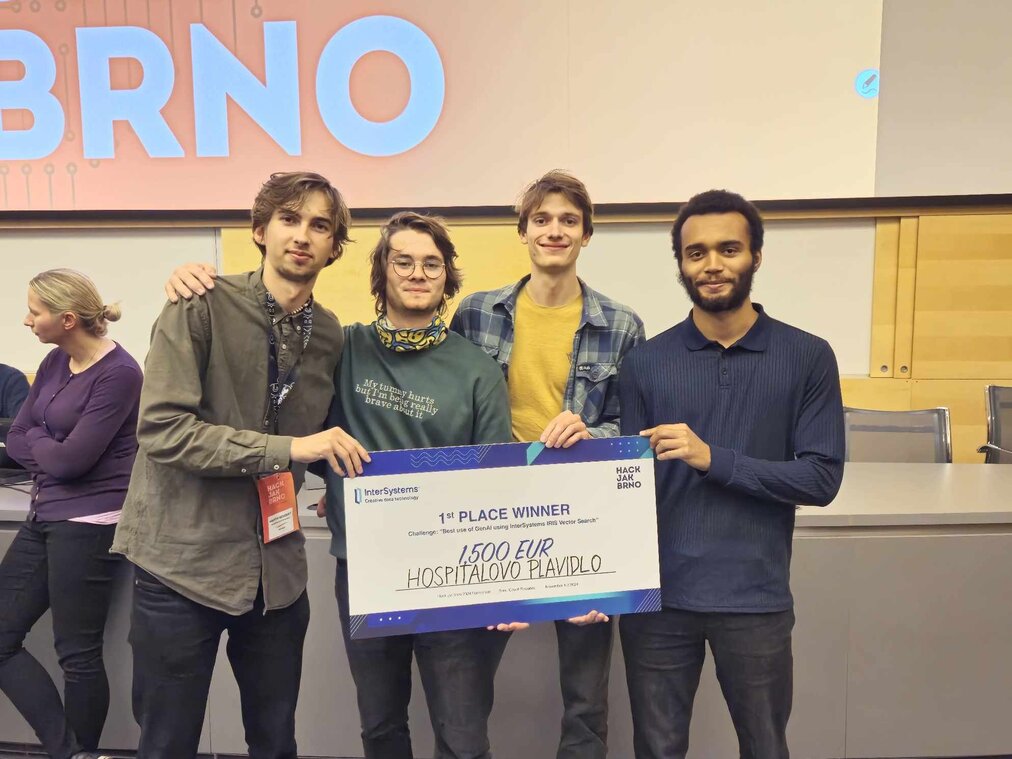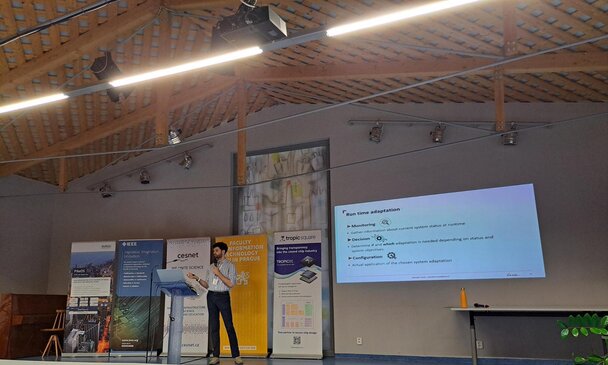
Students from the Faculty of Information Technology at the Czech Technical University (FIT CTU) in Prague won first place with their proposal for a digital tool to detect antibiotic resistance. They claimed the top spot at the Hack jak Brno healthcare hackathon in the InterSystems category. The hackathon took place from November 1 to 3, 2024, in Brno, with 80 talented IT students from across the Czech Republic participating.
The team, named Hospitalovo Plavidlo, consisting of Bc. Filip Kašpar, Ivan Dostál, Bc. Martin Benedikt, and Bc. Yannick Daniel Gibson, worked intensively for 48 hours to develop a solution for identifying resistance genes in DNA. They used the InterSystems IRIS database to store and quickly search vector representations of DNA sequences and genes. Their project marks a significant advancement in the speed of detecting patient resistance to antibiotic treatment. For their proposal, the team won first place in the InterSystems category.
The digital tool for detecting antibiotic resistance is based on bacterial genome analysis. The technology examines the genetic information of bacteria to determine whether they are resistant to specific antibiotics. The first step involves reading the bacterial genetic information, identifying the sequence of all its genes. The Hospitalovo Plavidlo team obtained this data from the hackathon organizers as files containing individual DNA sequences. The genetic data is then input into the digital tool, which can quickly and accurately analyze it. The tool searches for specific genes known to cause resistance to antibiotics. Based on this analysis, the tool provides information about whether the bacteria are resistant to certain antibiotics—this part of the process is much faster than traditional methods. This allows doctors to quickly determine which antibiotics will be effective in treating a particular infection, significantly improving patient care.
Thanks to this technology, doctors can rapidly detect whether bacteria show resistance to certain antibiotics, improving the diagnosis and treatment of infections, optimizing patient care, and contributing to the fight against antibiotic resistance.
“Our solution offers two key advantages. The first is the ability to analyze DNA sequences and immediately store their vector representation during the reading process. However, the main advantage is the ability to quickly search for DNA sequences that might contain the desired gene, using cosine similarity between the vector representation of the gene and DNA sequences. After identifying these sequences, we apply traditional algorithms to verify if the gene is indeed present,” explains Filip Kašpar, a student at FIT CTU.
This winning project will now be reviewed in more detail by the Brno University Hospital, with the possibility of implementing the tool in practice.
A total of 27 teams, mostly student groups, registered for the hackathon. Participants tackled nine real-world healthcare challenges posed by the Brno University Hospital, ranging from modernizing hospital staff schedules to developing tools for more accurate diagnoses and creating apps that facilitate patient access to healthcare information. Each challenge provided an opportunity for participants to apply their technological skills and creativity in ways that can have a real impact—improving patient care at Brno University Hospital.
“I am excited by the energy and creativity that participants brought to this hackathon. Their innovative approaches can truly transform the way we provide healthcare. This event shows how important the collaboration between academia and practice is,” added Andrea Pokorná, Vice Dean of the Faculty of Medicine at Masaryk University.




